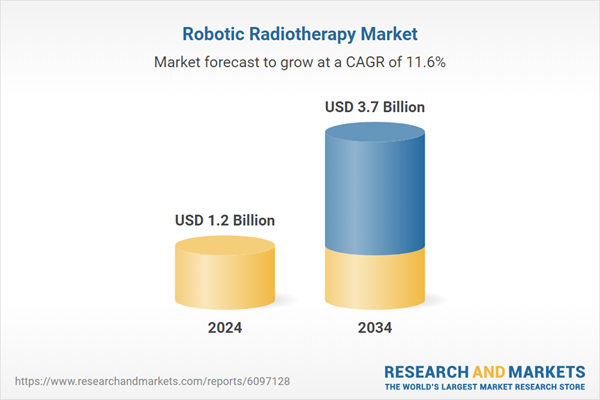Cutting-edge advances in real-time imaging, motion compensation, and AI-powered planning software are further fueling the adoption of robotic radiotherapy technologies. These systems automatically adapt radiation delivery to patient-specific movement or tumor shifts, enabling consistent, accurate dosing. Facilities prefer robotic equipment to treat tumors in delicate anatomical regions without harming nearby healthy tissue. The push for fewer treatment sessions, known as hypofractionation, is also contributing to the popularity of these systems. As a result, both healthcare providers and patients are increasingly opting for robotic platforms that combine real-time monitoring, beam modulation, and smart image-guided therapy.
In 2024, the radiotherapy systems segment in the robotic radiotherapy market held a 56.2% share. Their advanced targeting capabilities, offering sub-millimeter precision, have become indispensable in treating tumors located near vital organs or in hard-to-reach areas. By significantly reducing radiation exposure to surrounding healthy tissue, these systems have transformed the way clinicians manage complex cancer cases. Their integration into oncology practices has elevated patient outcomes and safety profiles, solidifying their role as a standard in next-generation cancer treatment.
Meanwhile, linear accelerators (LINACs) segment generated USD 512.2 million in 2024. These robotic-enabled devices support image-guided and intensity-modulated radiotherapy, delivering highly conformal doses tailored to dynamic tumor positions. Their adaptive planning features are especially valuable for tumors in mobile organs such as the lungs or liver, where breathing or digestion introduces frequent positional shifts. Additionally, LINACs are increasingly utilized in outpatient cancer care, allowing for shorter, more convenient treatment sessions that minimize hospital stays and maximize patient comfort.
U.S. Robotic Radiotherapy Market generated USD 508.3 million in 2024 and is projected to grow to USD 1.5 billion by 2034. Rising cancer prevalence-especially in an aging population-has intensified the need for precise, efficient treatment solutions. Hospitals and cancer centers are expanding investments in robotic platforms to offer non-invasive therapies with reduced recovery times and fewer complications. This patient-centric shift, favoring customized and targeted radiation approaches, continues to fuel technology adoption worldwide.
Key players in the Global Robotic Radiotherapy Market prioritize innovation, strategic collaborations, and geographic expansion to solidify their market standing. Accuray and Elekta are investing heavily in AI-based treatment planning and adaptive therapy systems. Siemens Healthineers and GE Healthcare are advancing integrated imaging and robotic platforms to boost precision. RefleXion and ViewRay are leveraging real-time tumor tracking to differentiate their offerings. Varian, Brainlab, and Hitachi continue to enhance software-driven functionalities and secure regulatory approvals in emerging markets. United Imaging and ZAP are scaling up production to meet growing demand globally, Mitsubishi Electric and Mevion focus on affordability and compact system design to tap mid-tier healthcare segments.
Comprehensive Market Analysis and Forecast
- Industry trends, key growth drivers, challenges, future opportunities, and regulatory landscape
- Competitive landscape with Porter’s Five Forces and PESTEL analysis
- Market size, segmentation, and regional forecasts
- In-depth company profiles, business strategies, financial insights, and SWOT analysis
This product will be delivered within 2-4 business days.
Table of Contents
Companies Mentioned
The companies featured in this Robotic Radiotherapy market report include:- Accuray
- Brainlab
- Elekta
- GE Healthcare
- Hitachi
- Ion Beam Applications
- Mevion
- Mitsubishi Electric
- RefleXion
- Shinva
- Siemens Healthineers
- United Imaging
- Varian
- ViewRay
- ZAP
Table Information
| Report Attribute | Details |
|---|---|
| No. of Pages | 130 |
| Published | May 2025 |
| Forecast Period | 2024 - 2034 |
| Estimated Market Value ( USD | $ 1.2 Billion |
| Forecasted Market Value ( USD | $ 3.7 Billion |
| Compound Annual Growth Rate | 11.6% |
| Regions Covered | Global |
| No. of Companies Mentioned | 16 |









